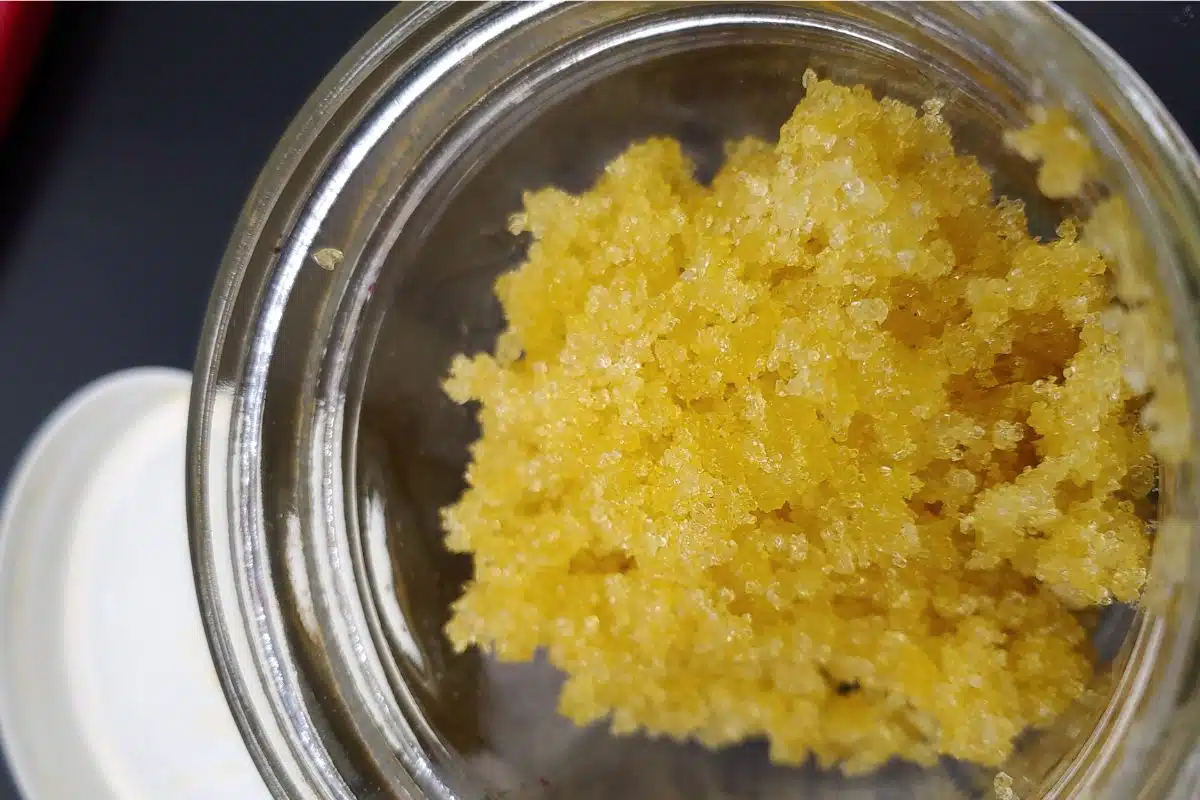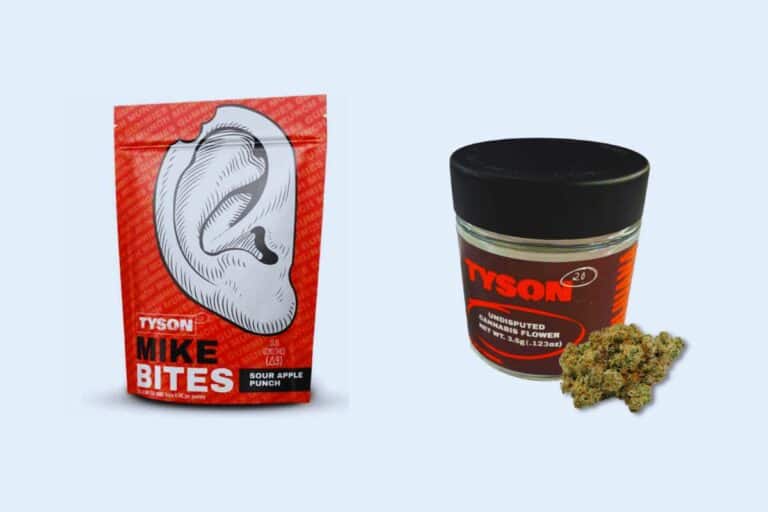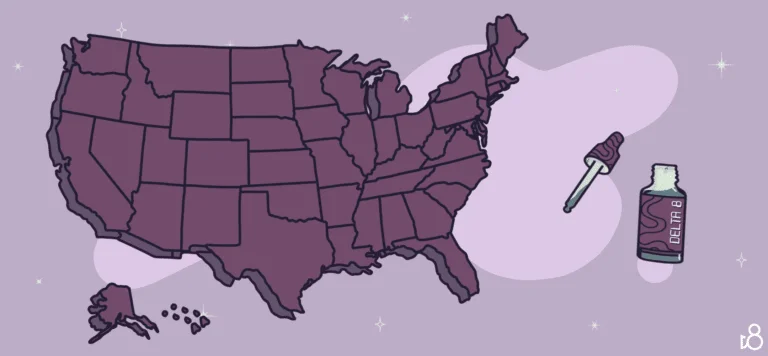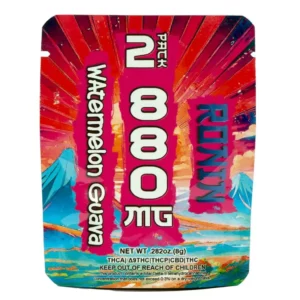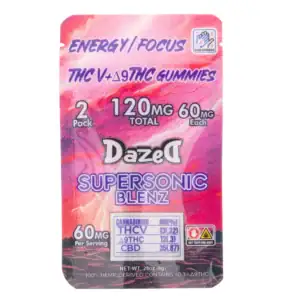THC Sand: A Comprehensive Guide on Its Properties and Uses
“THC sand” might feel like a sneak peek into an intergalactic adventure, but it’s actually about blending sand with THC, that magical element in marijuana that takes you on an exhilarating journey. It feels like everyone’s buzzing about the benefits of marijuana for health and happiness these days, sparking a thrilling time to dive into how THC combines with sand. Picture this: our shores and endless deserts sharing in the high? With marijuana popping up everywhere, now’s the prime moment to dive into the connection between THC and sand, pondering if our expansive outdoors is getting a cheerful boost. If you’re all about green living or just a fan of the great outdoors, this is something you can’t skip. Why stick around? What you’ll uncover will blow your mind!
Table of contents
Various studies have explored the different aspects of cannabis and THC, such as their impact on developmental endpoints, neurodevelopmental effects, and reproductive toxicity. A more comprehensive understanding of these effects can be found in publications such as animal evidence considered in determination of cannabis smoke and Δ 9 ‐ tetrahydrocannabinol (Δ 9 ‐ THC) as causing reproductive toxicity (developmental endpoint). However, there remains a need for further research focusing specifically on the intersection between THC and sand.
As a growing area of interest, the exploration of THC sand will require in-depth research that expands the current knowledge base around cannabis, THC, and their impacts on the environment. This article will probe this potential relationship between THC and sand while providing accurate and reliable information, drawing from relevant studies and expert insights.
THCa Sand Production
THCa sand, a type of cannabis concentrate, has gained popularity in the cannabis industry due to its unique properties and benefits. It is derived from the cannabis plant through a specific extraction process that results in a crystal-like structure with high levels of THC.
THCa, or tetrahydrocannabinolic acid, is a precursor to the well-known THC that provides the psychoactive effects associated with cannabis consumption. Through a process called decarboxylation, which involves heat, THCa is converted into THC. However, when in its natural crystalline form as THCa sand, the compound remains non-psychoactive and offers various benefits, such as being rich in cannabinoids and terpenes.

The production of THCa sand involves advanced extraction techniques. These methods require separating the trichomes from the plant material and then dissolving the resins to isolate the THCa. The extract is then subject to a meticulous purification process, which helps remove impurities and undesired elements.
During the final stage of production, the pure THCa is left to slowly crystallize, forming the distinct sand-like appearance. This concentrate boasts a high cannabinoid content, making it highly sought after in various applications across the cannabis industry.
THCa sand is often used to enhance the potency of other cannabis products, such as vaping oils and edibles. Additionally, it can be incorporated into concentrates, like shatter or wax, to create a more flavorful and potent smoking experience. By leveraging this versatile concentrate, the cannabis industry actively explores new and innovative ways to improve existing products and create novel offerings.
To learn more about THCa and its benefits, check out this comprehensive guide about THCa-infused.
Chemical Composition
The chemical composition of THC sand primarily includes cannabinoids like THCa, THC, and various terpenes. These molecules form the basis of the sand’s unique properties and potential applications. In this section, we will discuss the key aspects of these components.
THCa, or tetrahydrocannabinolic acid, is a precursor to the more well-known THC. It is found in raw cannabis plants before they are exposed to heat or light, which causes a process called decarboxylation to occur. THCa has unique benefits and effects that differentiate it from other cannabinoids, making it an essential component of THC sand. Understanding THCa vs Delta 9 is crucial for grasping the diverse nature of these two compounds and their respective properties.
| Component | Chemical Composition in THCa Sand |
|---|---|
| THCa (Tetrahydrocannabinolic Acid) | The primary cannabinoid in THCa sand, which is the acidic precursor to THC. |
| Other Cannabinoids | Depending on the extraction process, THCa sand may contain various other cannabinoids, including THC, CBD, CBG, etc. |
| Terpenes | Aromatic compounds responsible for the unique flavors and scents of cannabis. THCa sand may contain a diverse profile of terpenes, such as myrcene, limonene, pinene, and more. |
| Flavonoids | Phytonutrients responsible for the color and flavor of the concentrate. |
| Resin Particles | THCa sand may contain microscopic resin particles and trichomes from the cannabis plant material. |
| Plant Lipids | Fats and lipids from the plant material, which may be present in small amounts. |
| Solvents | Depending on the extraction method, trace amounts of solvents used in the extraction process may be present. |
| Plant Material | While THCa sand is a concentrate, it may contain traces of plant material, depending on the extraction process and quality control measures. |
THC, or tetrahydrocannabinol, is the primary psychoactive ingredient in cannabis and a significant component of THC sand. As one of the most potent cannabinoids, it has various medicinal and recreational applications. For those interested in learning about the strongest cannabinoid, it’s essential to explore the differences between THCs and other cannabinoids, including their unique effects.
In addition to cannabinoids, terpenes play a critical role in the chemical makeup of THC sand. Terpenes are organic compounds found in many plants, including cannabis, and are responsible for the distinct aroma and flavor profiles. These molecules also possess potential therapeutic effects, making them vital for understanding the holistic composition of THC sand.
The interactions between THCa, THC, other cannabinoids, and terpenes create a complex and fascinating chemical landscape within THC sand. Comparatively, THCa and CBD showcase distinct differences in their benefits and applications, further emphasizing the significance of each component in the chemical composition of THC sand.
In conclusion, the chemical composition of THC sand offers a diverse range of molecules, each with unique properties and potential applications. As research continues to explore the world of cannabinoids and terpenes, our understanding of THC sand’s chemical makeup will only grow, providing new insights and possibilities for its use.
Texture and Appearance
THC sand exhibits a unique crystalline texture, distinguished by its granular and sand-like appearance. It is often found in different environments, such as beach sands, and possesses certain characteristic features. The texture of THC sand is particularly noticed for its coarseness, which is primarily attributed to the varying sizes of its particles.
The granular structure in THC sand leads to a rough surface that can easily be felt when rubbed between fingers. This type of texture is a result of the composition of the sand, which often comprises mineral and rock fragments. The size of these particles plays a crucial role in determining how coarse or smooth the overall texture will be.
In addition to its texture, the appearance of THC sand can vary significantly. For instance, beach sand often displays a lighter color, due to the exposure to natural elements such as sun, wind, and water. The particle sizes in beach sand also tend to be more rounded and polished because of the constant friction caused by the movement of the waves.
On the other hand, other forms of THC sand might exhibit a more angular shape and a darker color, depending on the geological setting and mineral composition. The presence of impurities and other mineral particles can also contribute to the sand’s appearance, giving it a distinctive color or pattern.
In summary, THC sand’s texture and appearance are greatly influenced by its granular structure, particle sizes, and mineral composition. The color and feel of the sand can differ based on factors such as the environment it is found in, as well as the influence of external elements like exposure to sunlight and water.

Consumption Methods
When it comes to consuming THC, there are various methods available, each with its unique benefits and drawbacks. One popular method is smoking, where the user inhales the combusted flower through a pipe, bong, or rolled joint. This classic technique offers a quick onset of effects, but the heat generated can cause irritation to the user’s throat and lungs.
- Vaporizing, or “vaping,” is another common method for consuming THC, providing a smoother experience compared to smoking. With vaporizers, THC is heated to a much lower temperature, producing a vapor that is less harsh on the respiratory system. A Guide to Choosing the Best One details the features and options available for convenient cannabis consumption.
- Dabbing has gained popularity in recent years, particularly for those seeking a more potent and concentrated experience. This method involves heating a concentrated THC product, such as a dab or THCa crystal, on a heated surface (usually a “dab rig”) and inhaling the vapor. What are THCa Dabs: A Comprehensive Guide provides detailed information on the benefits, usage, and extraction of these non-psychoactive cannabis extracts. It’s worth noting that dabbing THCa does not produce a psychoactive high, making it an attractive option for those seeking the potential therapeutic benefits of cannabis without the intoxicating effects.
- When considering the financial aspect of cannabis consumption, it’s essential to weigh the Edibles vs Smoking Cost. Edibles, such as THC-infused food and drinks, offer a discreet and long-lasting experience but may have different costs compared to smoking or other methods.
In conclusion, several diverse THC consumption methods cater to individual preferences and needs. Be it smoking, vaping, dabbing, or consuming edibles, each technique offers unique experiences, and users should be mindful of the facts, potential effects, and costs when selecting their preferred method.
Impact and Effects
THC, or tetrahydrocannabinol, is the primary psychoactive compound found in cannabis plants. The effects of THC can vary greatly depending on factors such as potency and purity. Consuming THC may lead to changes in cognitive function, mood, and physical sensations. A common effect of THC consumption is red eyes, which can occur from various methods of ingestion, including edibles (Do Edibles Make Your Eyes Red: A Concise Investigation).
When ingesting THC, individuals may experience a range of psychoactive effects. These may include feelings of euphoria, relaxation, heightened sensory perception, and altered time perception. It is important for users to understand their tolerance level, as the optimal dosage can vary greatly from person to person. To manage their THC intake, users can follow a concise dosage guide to determine the appropriate amount for their needs and experience level.
In addition to the psychoactive effects, the impact of THC on physical well-being can also be noteworthy. Some people may experience dry mouth, increased appetite, or drowsiness. It is essential for users to consume THC responsibly, considering factors such as their overall health and pre-existing medical conditions.
It is worth noting that the potency and purity of THC can significantly influence its effects. Higher potency cannabis products generally produce more pronounced effects, while lower potency products tend to have milder impacts. Similarly, the purity of THC can affect the user’s experience: products that contain additives or impurities can potentially cause adverse reactions or diminished benefits.
In summary, the impact and effects of THC can vary depending on several factors, such as individual tolerance levels, potency, and purity. Users should be aware of these factors and consume cannabis products responsibly by following appropriate dosage guidelines and taking their overall well-being into account.
Health Benefits and Risks
| Health Benefit | THC (Tetrahydrocannabinol) | THCa (Tetrahydrocannabinolic Acid) | THCa Sand |
|---|---|---|---|
| Psychoactive Properties | – THC is the primary psychoactive cannabinoid in cannabis. – It can produce euphoria, altered perception, and relaxation. | – THCa is non-psychoactive in its raw form and does not produce a “high.” – Requires decarboxylation to convert to psychoactive THC. | – THCa sand may contain varying levels of both THCa and THC, depending on the extraction and processing methods. It can have psychoactive effects. |
| Pain Relief | – THC is known for its potential analgesic (pain-relieving) properties. – It may help alleviate various types of pain, including chronic pain. | – THCa’s potential for pain relief is being explored, but it is less studied than THC. | – THCa sand may contain varying levels of THCa and THC, contributing to potential pain relief. |
| Anti-Inflammatory | – THC has shown anti-inflammatory properties and may help with conditions involving inflammation. | – Limited research suggests THCa may have anti-inflammatory effects. | – THCa sand may retain some anti-inflammatory properties from THCa. |
| Appetite Stimulation | – THC is well-known for its ability to stimulate appetite, often referred to as “the munchies.” | – THCa’s potential for appetite stimulation is not as established as THC’s. | – THCa sand may contain varying levels of THCa and THC, contributing to potential appetite stimulation. |
| Nausea and Vomiting | – THC has anti-nausea and anti-emetic properties, making it useful for managing nausea and vomiting. | – THCa’s potential for nausea and vomiting relief is less studied than THC’s. | – THCa sand may retain some anti-nausea and anti-emetic properties from THCa and THC. |
| Neuroprotective | – Some research suggests THC may have neuroprotective properties, potentially beneficial for certain neurological conditions. | – Limited studies indicate THCa may have neuroprotective potential. | – THCa sand may contain varying levels of THCa and THC, contributing to potential neuroprotective effects. |
| Legal Considerations | – THC’s legal status varies widely by region. – In some places, it is legal for medical or recreational use, while others heavily regulate or prohibit it. | – THCa’s legal status is often linked to the legal status of cannabis. – It is generally non-psychoactive and may be present in legal cannabis products. | – THCa sand may be subject to the same legal regulations as THC and cannabis concentrates. Always check local laws. |
THC sand, a concentrated form of THC, offers various potential health benefits due to its primary components, such as CBD and THC. CBD, a non-psychoactive compound, is known to have anti-inflammatory properties. These properties can be helpful in alleviating certain medical conditions, such as headaches. Delta 8, a mildly psychoactive cannabinoid, has been linked to potential relief for headaches. The combination of these compounds in THC sand might prove beneficial for some users.
The endocannabinoid system (ECS) plays a key role in regulating numerous physiological processes, including stress management, pain perception, and immune response. Both THC and CBD have been found to interact with the ECS, which might contribute to their potential health benefits. CBD, for instance, can help support the ECS in regulating stress and mood, while THC could help reduce feelings of nausea and stimulate appetite in those experiencing chemotherapy side effects.
However, consuming THC sand also comes with potential risks. Although it carries certain therapeutic potential, the highly concentrated form of THC might increase the likelihood of developing cannabis dependence. Long-term, heavy use of THC sand could eventually affect memory, cognitive function, and even mental health. Moreover, some individuals might experience adverse reactions, such as increased anxiety, paranoia, or hallucinations.
In conclusion, THC sand embodies both potential health benefits and risks. Ultimately, users should educate themselves on these factors and consult with a healthcare professional to determine the best course of action for their specific needs and conditions.
Industrial Relevance
The cannabis industry has seen significant growth with the legalization of cannabis across various regions. As the market expands and subsequent demand grows, the development and use of THC sand becomes increasingly relevant. THC sand, a potent concentrate, offers an appealing avenue for businesses looking to capitalize on the rising popularity of cannabis concentrates.
One of the key players in this industry are dispensaries. As they cater to a wide range of consumers, they seek innovative products for recreational and medicinal usage. THC sand, being a concentrated form of cannabinoids, provides a diverse range of applications such as edibles, topicals, or vaping, making it a versatile option for dispensaries to incorporate into their inventory.
Moreover, the Farm Bill of 2018 played a crucial role in accelerating the growth of not just the cannabis space, but also the hemp-derived market. With the explicit support to expand and commercialize hemp-based products, THC sand stands to benefit as it is derived from both cannabis and hemp plants. The market for hemp-derived products is experiencing tremendous growth, positioning THC sand as a valuable component in the pharmaceutical, cosmetic, and food sectors.
Cannabis concentrates, a broad category of concentrated cannabis products, have gained popularity for their increased potency and unique consumption methods. THC sand, as a highly concentrated form of cannabis, offers consumers an option to experience the benefits of cannabis with smaller doses. This makes it attractive to both long-term users and newcomers in search of potent cannabis products.
In conclusion, the industrial relevance of THC sand lies in its versatility and potential to cater to the growing demand for potent cannabis products. With the ever-expanding cannabis industry and increasing interest in hemp-derived products, THC sand is well-positioned to play a significant role in the market by offering innovative solutions for businesses, dispensaries, and consumers alike.
Comparison with Other Concentrates
THC sand, also known as diamond sauce, is a popular cannabis concentrate known for its high potency and unique crystalline structure. It shares similarities with other concentrates, such as wax, hash, live resin, kief, and badder. However, there are distinct differences in their properties and uses.
- Wax is a soft, opaque concentrate with a texture similar to lip balm. There are different types of wax dabs, including crumble, budder, and honeycomb. Although wax is similar in potency to THC sand, it has a more delicate consistency and is easier to manipulate.
- Hash, a traditional cannabis concentrate, is made by compressing the resin of the cannabis plant, usually in the form of a solid brick or ball. Rosin is a solventless concentrate derived from pressing cannabis flowers or hash under heat and pressure. Hash rosin and rosin offer subtle differences in potency and consistency; hash rosin, for example, is typically more potent and has a lighter color than rosin made from flowers.
- Live resin is a highly flavorful concentrate produced by flash-freezing freshly harvested cannabis plants before extraction. This process preserves the plant’s terpenes, resulting in a product with more intense flavor and aroma compared to other concentrates. While live resin and THC sand both offer highly potent experiences, live resin’s focus on terpene preservation sets them apart.
- Kief is the fine, powdery substance that consists of trichomes, the resinous glands found on cannabis flowers. It’s often collected from a grinder or sifted through a screen and can be sprinkled on top of ground cannabis or made into hash. Kief is less potent compared to THC sand but is still a popular choice for those looking for extra potency in their cannabis consumption.
- Badder, like wax, is a soft and malleable concentrate. It’s similar in texture to cake frosting and is generally high in terpenes, making it more flavorful than some other concentrates. Badder is often extracted using solvents, and while it may not be as potent as THC sand, it offers a robust sensory experience.
In conclusion, THC sand is a unique concentrate that stands out due to its crystalline structure and high potency. It shares similarities with other concentrates like wax, hash, live resin, kief, and badder, but each type of concentrate offers a distinct experience tailored to individual preferences and desires. For an in-depth analysis of THC sand’s properties and uses, consumers can refer to informative resources available online.
Frequently Asked Questions
What is the difference between THC sand and kief?
THC sand and kief both consist of resinous trichomes, which contain the cannabis plant’s active cannabinoids. However, while kief refers to the resin glands collected from the surface of cannabis flowers, THC sand is a more concentrated and refined form of these trichomes. It consists of isolated THCa crystals that are subsequently converted into THC when exposed to heat.
How is THC sand created from cannabis?
THC sand is created through a process that involves isolating and separating the THCa crystals from cannabis flowers. Using extraction methods such as dry sifting, ice water extraction, or CO2 extraction, the resinous trichomes are collected. The trichomes are then subjected to a purification process, which removes any remaining impurities, leaving behind the pure THCa crystals that form THC sand.
What are the effects of dabbing THCa sand?
When THCa sand is heated and vaporized through a method called dabbing, it is converted to THC, resulting in a potent and highly concentrated form of cannabis. Dabbing THCa sand typically produces a more potent, fast-acting, and longer-lasting high due to the higher concentrations of THC involved. However, users should exercise caution as the powerful effects of dabbing THC sand may not be suitable for everyone, particularly those with lower tolerance levels or inexperienced users.
What is sand infused flower and its benefits?
A sand-infused flower is a cannabis bud coated in THC sand, offering a more potent and flavorful smoking experience. The infusion of THC sand enhances the cannabinoid and terpene profiles of the flower, resulting in stronger effects and potentially increased therapeutic benefits. Sand-infused flowers are popular among medical marijuana patients and recreational users seeking an intensified cannabis experience.
How does THC sand differ from hash?
While both THC sand and hash are cannabis concentrates, they differ in composition, potency, and production methods. Hash is made from compressed kief or resin glands, whereas THC sand is composed of isolated THCa crystals. Moreover, THC sand is typically more potent due to its higher THC concentration, while hash has a unique flavor and terpene profile resulting from the plant material used in its production.
What are the uses of THCa sand in the cannabis industry?
In the cannabis industry, THCa sand is commonly used to enhance the potency and flavor of various products. It can be incorporated into edibles, topicals, and other cannabis-infused formulations, providing a stronger and more concentrated dose of THC. Additionally, THCa sand is used to create high-quality THCa concentrates for dabbing, as well as sand-infused cannabis flowers for a potent smoking experience.

